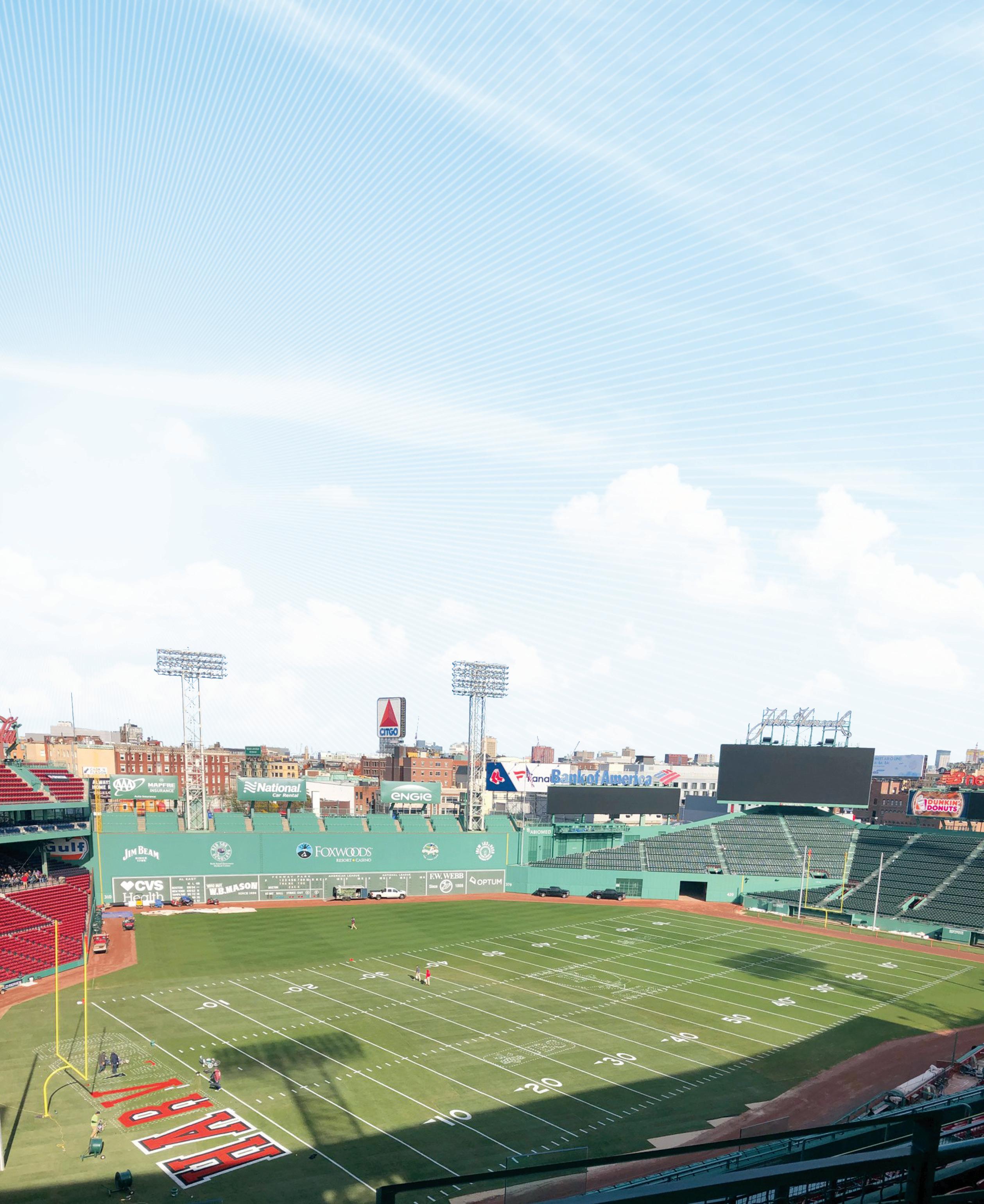
3 minute read
Turning Fenway into a Football Stadium
Football Stadium in to a Tu rnin g Fenwa y N By om Layman
NESTMA member David Mellor might have had the most important job before the 135th playing of The Game on Saturday afternoon, November 17, 2018, but he wasn’t found on a roster of Harvard or Yale. He wasn’t listed on the coaching or support staff either.
Advertisement
Mellor was responsible for turning Fenway Park into a football field. The senior director of grounds and his team took the job seriously, and they were ready to show off their handiwork for one of college football’s most storied rivalries.
“I think it’s exciting,” Mellor said in an interview. “One of the best parts of my job is being behind the scenes and helping people create memories on the field.”
Mellor got his break in major league baseball with the Milwaukee Brewers 34 years ago, and has been with the Red Sox for the past 19.
Fenway Park was home to the Boston Patriots, now the New England Patriots, from 1963–68, and in recent years, football has made a comeback to the yard born in 1912. It hosted a matchup between Boston College and Notre Dame in 2015 and several regional high school football matchups in the last couple of years.

Photo by Aaron Goldman
Part of Mellor’s job was making sure the playing surface met NCAA regulations. The pitchers’ mound, used as recently as October 24 as the Red Sox marched through the New York Yankees, Houston Astros, and Los Angeles Dodgers to World Series victory, was removed and sod was shipped in from New Jersey to replace the dirt infield. Mellor also enlisted Sports Turf Specialties of Wrentham, Mass., to beef up his operations staff.
Strips of sod 4-feet wide by 35-feet long were laid down on the infield. Mellor said the strips used to be half that size, but bigger strips make for better coverage with fewer seams. “It’s a healthier and safer playing surface,” he said. A top dressing was added to the sod, and his crew went on hands and knees filling any gaps to make sure players’ spikes did not get stuck between the sod segments.
A few factors made a tighter schedule for Mellor. First, the Red Sox’ successful playoff run extended the season almost a month. The team returned from Los Angeles and on Halloween held a Duck Boat rally, which kicked off at Fenway. Then, the Boston area saw a significant amount of rain in the following weeks. But everything stayed on track, according to Mellor, thanks to some later nights for him and his team.
Mellor said the Series run was a good problem to have. “It was exciting,” he said. “It condenses the timeline a little bit, and working with Mother Nature certainly has been challenging. Our crew has everything dialed in, and we are excited for game day.”
As for The Game, Mellor and his staff kept a watchful eye on both Harvard and Yale during warmups to see how the field behaved. He said he wanted to see how players are running on the surface, how they are cutting, and what challenges and suggestions they might have.

He worked directly with the umpiring crew to ensure the playing surface complied with NCAA regulations. And his team was on alert for repairs needed during play.
“We stress attention to detail,” Mellor said. “The crew takes a lot of pride in their work.”
Mellor has been a part of four World Series championship teams and also has had to work to turn Fenway into a haven for some of the biggest acts in the music business. In that sense, Fenway has become more than a baseball park. The Harvard/Yale matchup is another interesting line to add to his resume, and he was excited to be part of a tradition that means so much to both schools.
“It’s a very exciting game,” Mellor said. “We are humbled to be a part of it.”
Editor’s Note: Harvard won the game at Fenway 45 to 27. Reprinted from The Harvard Gazette, November 14, 2018.










